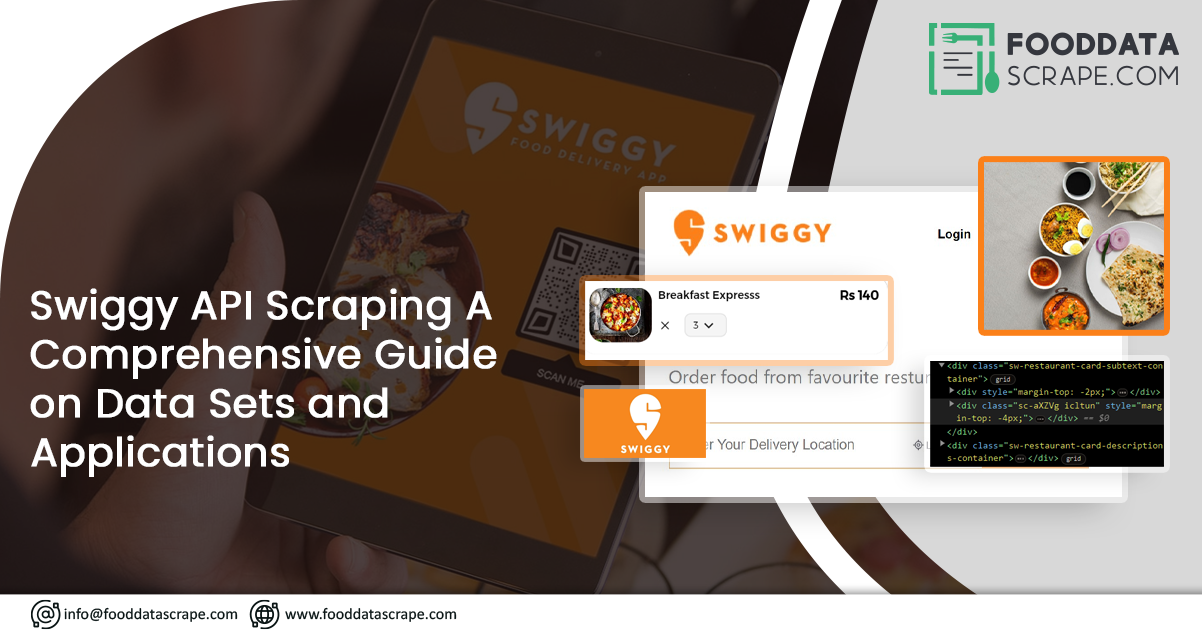Swiggy, a widely recognized food delivery service, offers the Swiggy API—an Application Programming Interface that grants businesses and developers access to Swiggy's comprehensive data and services. By integrating with the Swiggy API, developers can seamlessly incorporate functionalities like placing orders, accessing restaurant menus, monitoring delivery progress, and retrieving user profiles within their applications and systems. This API facilitates the effortless inclusion of Swiggy's features into diverse applications, streamlining the food ordering and delivery process for users.
By integrating the Swiggy Food Delivery api Data Collection, designers can embed Swiggy's food delivery services into their websites, applications, or platforms. Swiggy has established itself as a prominent food delivery platform in various Indian cities. Leveraging the capabilities of the Swiggy API, developers can provide customers with convenient solutions for food delivery by tapping into its extensive features and data.
The Swiggy API scraping empowers designers to offer users functionalities such as browsing restaurant menus, placing orders, tracking real-time delivery status, and managing payment methods. By utilizing this API, developers can access detailed information about a restaurant's offerings, prices, and availability, enabling customers to place orders with complete confidence in their choices.
The Swiggy API facilitates secure and efficient communication between third-party applications and the Swiggy network, thereby enhancing the reliability and seamlessness of the food delivery process. Leveraging Swiggy's robust business ecosystem and delivery network, programmers can create software that simplifies customer order placement and food delivery experience.
An Overview of the Swiggy API
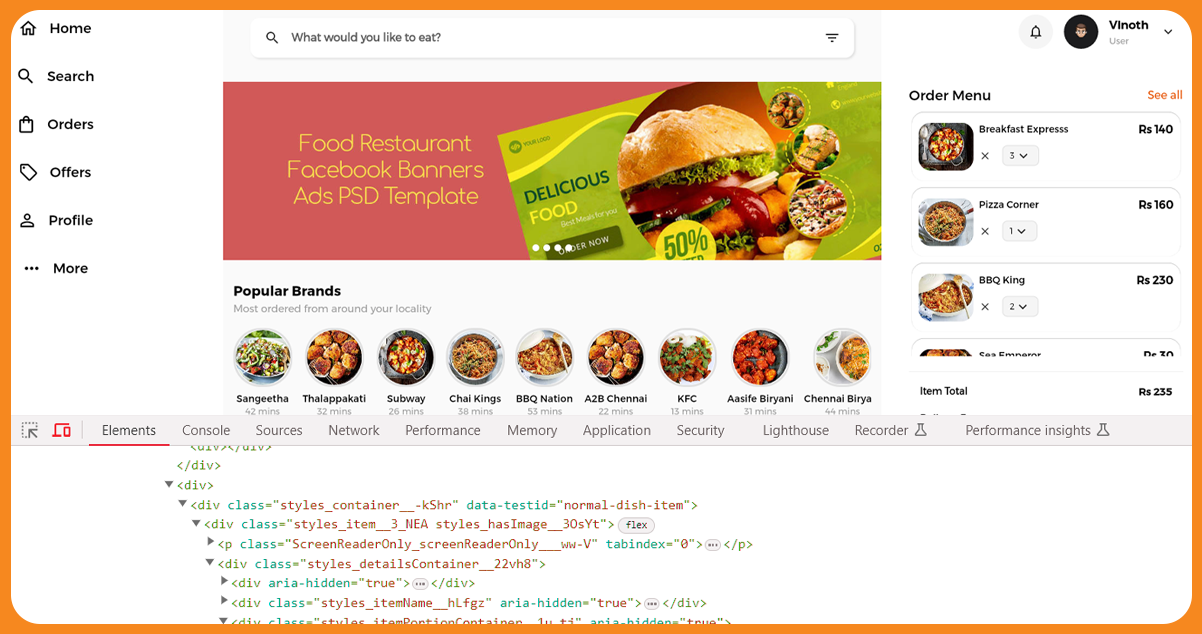
Swiggy, the renowned online platform for food ordering and delivery, offers the Swiggy API as a versatile tool for app development. This API empowers developers to integrate Swiggy's services seamlessly into their applications, websites, and online marketplaces. Packed with many functionalities and data, the Swiggy API simplifies purchasing and delivering meals.
Through the Swiggy food delivery scraping API services, developers can enable users to explore restaurant options, peruse food menus, place orders, track deliveries, and manage their accounts and preferences. The API provides endpoints for extracting restaurant-related data, including names, locations, cuisine types, and reviews. By accessing information about available dishes, their prices, and accessibility, developers can assist users in making informed meal choices.
Beyond facilitating the consumer experience, the Swiggy API enables programmers to engage in the ordering and delivery workflows. Designers can update order statuses, retrieve details, and initiate new orders. Additionally, they can gather service-related information, such as staff details and estimated delivery times.
To ensure the security and confidentiality of user data, the Swiggy API establishes a secure connection between external applications and the Swiggy network. The API employs robust authentication mechanisms to verify requests and safeguard sensitive information.
List of Data Fields
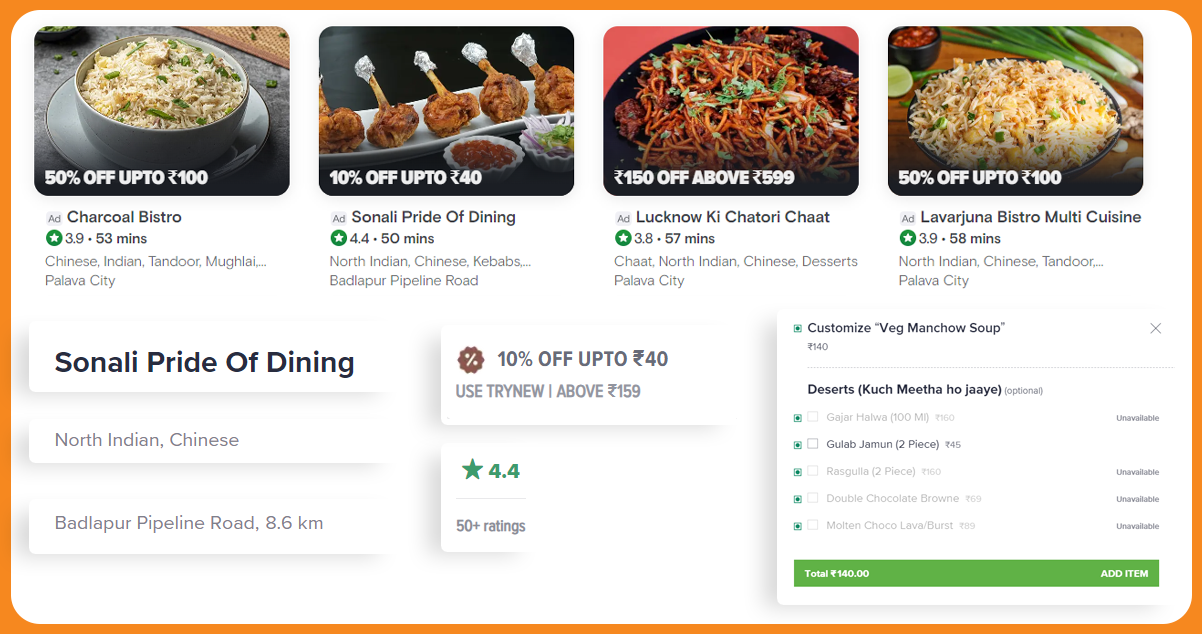
- Restaurant Name
- Restaurant's ID
- Address
- City
- State
- Country Code
- Postal Code
- Menu
- Pricing
- Ratings
- Reviews
- Discounts
- Opening Hours
Significance of Swiggy API Datasets
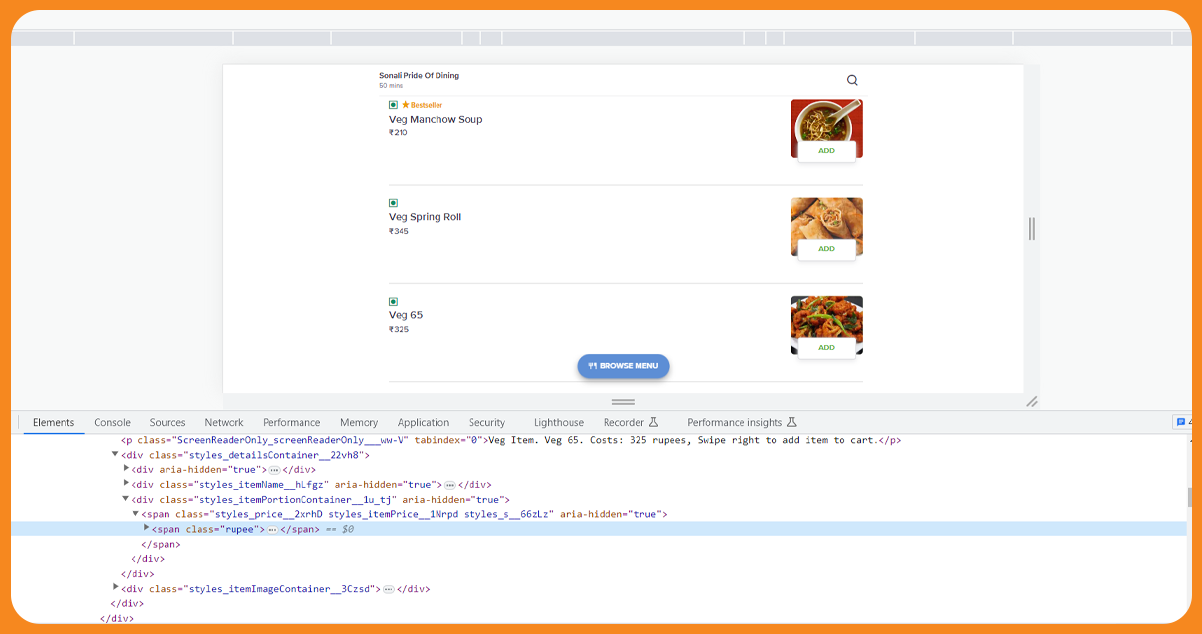
The data arrays within the Swiggy API serve as a foundation for programmers to develop cutting-edge applications and enhance customer service within the food delivery ecosystem. The significance of these datasets is multifaceted:
Restaurant and Meal Information: The available datasets using food delivery data collection services enable programmers to extract a comprehensive range of restaurant-related data, including names, locations, cuisine types, reviews, and food selections. This information empowers developers to give customers real-time and accurate details about restaurants and available dishes. This transparency aids customers in making well-informed decisions when placing meal orders.
Pricing and Availability: The datasets encompass real-time prices and food availability information. This valuable data assists programmers in ensuring accurate order placements and providing customers with precise cost information. This alignment between displayed information and actual availability and pricing manages customer expectations effectively.
Order Tracking and Dispatch: Scrape food delivery API data to gain insights into order tracking mechanisms and notification systems for delivery updates. Designers can leverage this information to offer customers real-time updates on their orders, estimated delivery times, and progress tracking. This level of transparency enables customers to track their orders' journey, enhancing their overall experience.
Personalization and Recommendations: These data arrays empower programmers to create personalized customer experiences by suggesting restaurants and food items based on user preferences and behaviors. This personalized touch fosters customer engagement and satisfaction, enhancing the user experience and fostering loyalty.
Analysis and Insights: The datasets available through Swiggy food delivery API data collection yield valuable information and analyses concerning restaurants, menu items, purchasing patterns, and customer preferences. This wealth of knowledge enables programmers to identify trends, understand user behaviors, and enhance platforms or software. Informed decisions based on these insights improve application performance and revenue generation.
Types of Data Sets in the Swiggy API
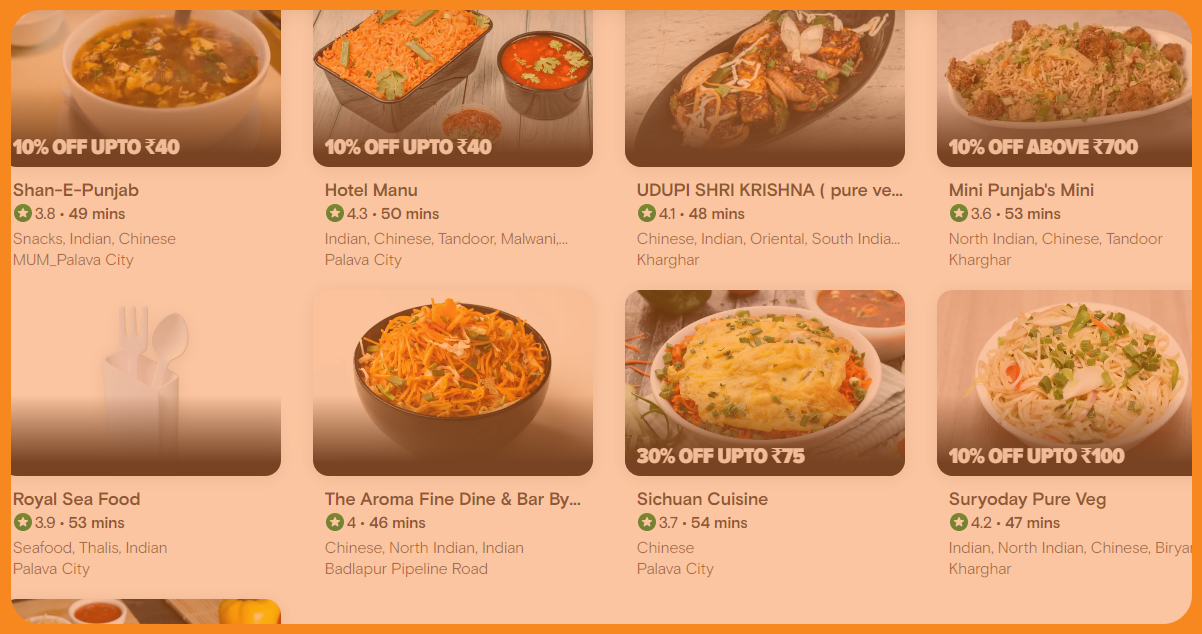
Developers can seamlessly utilize various data sets available through the Swiggy API to enrich the functionality of their applications and platforms, ultimately leading to a seamless food delivery experience for end-users. The following are common types of information available:
Dining Data Collections: These datasets encompass comprehensive details about the restaurants accessible via Swiggy. Information includes names, addresses, menus, reviews, and operating hours. Designers can leverage this data to present users with an exhaustive list of dining options that align with their preferences.
Meal Data Groups: Food menu databases contain information about the food offerings available through Swiggy. These datasets include each item's names, descriptions, prices, and sourcing information. Such information enables programmers to display menu options with detailed descriptions and accurate pricing.
Fulfillment Data Collections: Dispatch-related data sets provide insights into Swiggy's delivery partners, availability, and estimated delivery times. By incorporating delivery tracking tools into their applications, developers can keep users informed about the status of their deliveries.
Swiggy Data Sets Use Cases
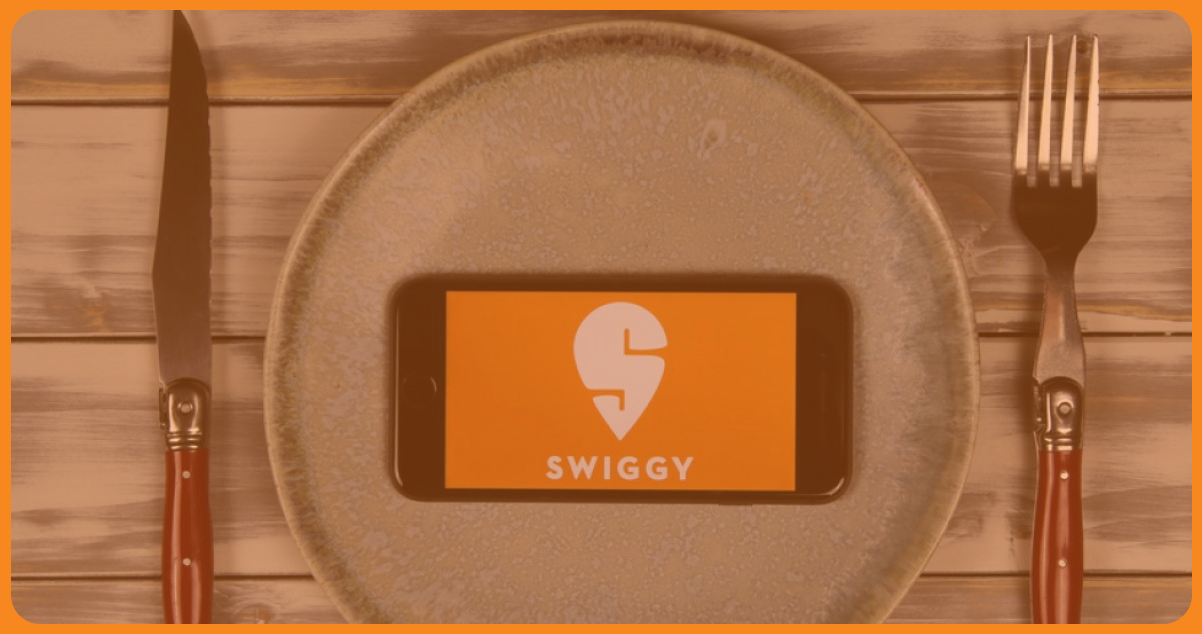
The Swiggy API empowers programmers to access a wealth of data, opening up various avenues for improving their applications and offering users more valuable features. Some critical uses of the Swiggy data sets include:
Personalized Restaurant Recommendations: By utilizing Swiggy restaurant data scraping, developers can assist users in discovering new dining options aligned with their preferences. Programmers enhance users' dining experiences through personalized restaurant suggestions by providing them with relevant information about various eateries.
Menu Customization: Menu information sets enable the modification of menus, allowing users to tailor their meal choices. Programmers can organize menu options based on individual eating habits, dietary restrictions, or preferences. This customization ensures users can quickly find suitable meal selections.
Tailored Suggestions: Programmers can offer personalized recommendations and deals to users by employing individual purchase histories and behavior. This tailored approach enhances user satisfaction and engagement by providing suggestions aligned with their preferences and previous behaviors.
Delivery Management: Utilizing delivery data sets from the Swiggy API, developers can effectively monitor delivery partners' availability and allocate orders. It includes optimizing route planning to provide users with accurate delivery estimates, enhancing the overall delivery experience.
Steps Involved in Scraping Swiggy Food Delivery Data Using Swiggy API

Using the Swiggy API Scraping involves a series of steps to access and retrieve the desired information. Below are the steps you would typically follow to use the Swiggy API for data extraction:
API Key Generation: Register on the Swiggy API platform and obtain your API key. This key is necessary for authentication and access to the API's resources.
Authentication: Include your API key in the request headers to authenticate your requests. The exact method might differ based on your programming language and HTTP library.
Identify Endpoint: Determine the specific endpoint you want to extract data from. Swiggy's API offers endpoints for various data types, such as restaurants, menus, orders, deliveries, etc.
Craft API Request: Formulate the API request URL by combining the base API URL with the chosen endpoint. Include any required query parameters or filters.
Send Request: Use an HTTP client (e.g., requests library in Python) to send a GET request to the API endpoint.
Handle Response: Check the HTTP status code of the response to ensure success.
Data Processing: Extract the relevant information from the JSON response based on your extraction requirements.
Pagination (If Applicable): If the API response is paginated, you may need to make additional requests to retrieve all the data by iterating through pages.
Data Storage or Presentation: Depending on your use case, store the extracted data in a database or a file or present it to users in your application.
Error Handling: To manage potential exceptions, timeouts, or unexpected responses, implement error handling.
Rate Limiting: Be mindful of Swiggy's rate limits to avoid overloading the API and ensure a smooth extraction process.
Conclusion: Leveraging the Swiggy API for scraping offers a powerful way to access and utilize a wealth of data from the Swiggy platform. With the API's capabilities, developers can extract restaurant information, menu details, order and delivery status, user preferences, and more. Harness this data to enhance user experiences, create personalized recommendations, streamline delivery processes, and provide valuable insights into user behaviors and trends. By adhering to proper authentication, rate limiting, and API guidelines, Swiggy scraping through the Swiggy API empowers developers to craft applications that cater to users' preferences and contribute to an efficient and satisfying food delivery ecosystem.
For more in-depth information, feel free to contact Food Data Scrape today! We're also here to assist you with any of your needs related to Food Data Aggregator services and Mobile Restaurant App Scraping services. We also provide advanced insights and analytics that offer valuable data-driven perspectives to drive informed decision-making and enhance business strategies.
Get in touch
We will Catch You as early as we recevie the massage
Trusted by Experts in the Food, Grocery, and Liquor Industry




























































































